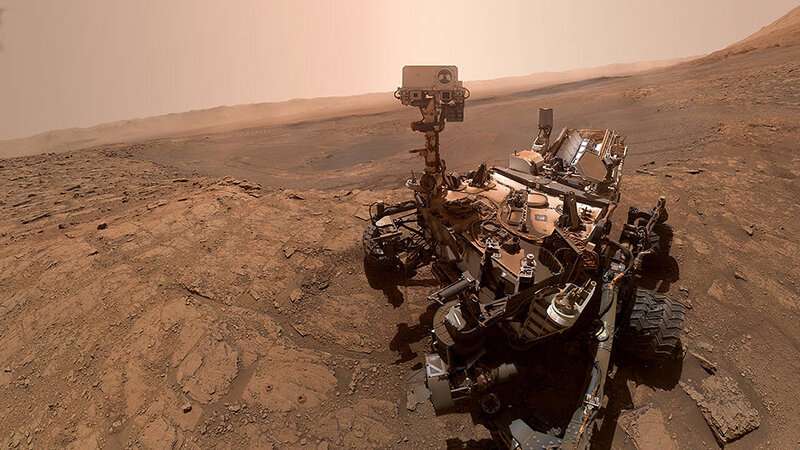Inside it, they swirled volcanic ash as a stand-in for Martian dust in a series of experiments that allowed them to avoid pitfalls that had stymied earlier research.
They determined that electrical discharges would likely be small, given the weak electrical fields, about 20 thousand volts per meter, supported by the Mars atmosphere.
Earth's atmosphere, by comparison, can withstand electrical fields reaching 3 megavolts per meter, producing spectacular lightning storms common and sometimes deadly in the southeast United States, said Joshua Méndez Harper, a research engineer in the Oregon Center for Volcanology in the Department of Earth Sciences.
"Our experiments, and those of others before us, suggest that on Mars it is easy to get sparks when you agitate sand or dust," Méndez Harper said. "However, it may be difficult, even in large dust storms or within dust devils, to get very large discharges or conventional lightning because the Martian atmosphere is bad at storing charge."
Such frictional processes are experienced on Earth in much simpler ways—by touching a doorknob after socks slide across carpet or sticking a balloon on a window after rubbing it on human hair.
Martian dust devils, Méndez Harper said, may appear to sparkle, crackle or faintly glow in dark conditions as they roll across Mars' desiccated landscape. However, discharges may be so small that they may only be detected using the radio waves they emit at close ranges.
Previous experiments had been inconclusive because particles were swirled in a way that put them in contact with the walls of the testing enclosures. Some experiments used particles of materials not found on Mars. Such contacts may have produced charging not characteristic of a Martian dust storm.
Méndez Harper, Dufek and George McDonald, a postdoctoral researcher at Rutgers University, got around the wall-exposure limitation using the glass tube. They created frictional charging by colliding particles of basaltic ash from Mexico's Xitle volcanic eruption about 2,000 years ago.
Collisions in the sealed tubes occurred at velocities expected in a light Martian breeze, with particles away from outer walls and in a pressurized, atmospheric pressure of 8 millibars of carbon dioxide, similar to that on the Martian surface.
The volcanic rock used in the project is similar to Martian basalt, as detected by rovers in the Pathfinder and Mars Exploration Rover missions and the dust analogs developed by NASA's Jet Propulsion Laboratory.
As a comparison, the researchers also allowed particles to contact surfaces foreign to anticipated conditions on Mars. That created sparks but with a polarity different than in the new experiments.
"We were interested in pursuing this work because of the number of new missions to Mars and the potential of constraining observations," said Dufek, the UO's Gwen and Charles Lillis Chair and director of the Oregon Center for Volcanology.
"Quantifying charging and discharging behavior has a bearing on the transport of dust in the atmosphere and has long been studied in relation to modulating chemical reactions, including synthesizing organic compounds," he said.
The low energy of discharge on Mars as indicated by the new experiments means these effects are unlikely to impact mechanical operations, Dufek said.
Nevertheless, the Jezero Crater appears to regularly experience dust storms in the autumn and winter. That, McDonald said, may provide opportunities for rudimentary observations of electrostatic phenomena by the newly deployed rover.
One of the objectives of its mission is to assess past environmental conditions. Evidence for a more substantial atmosphere in the past would have a bearing on the planet's electrical environment and how it has changed over time.
"The big takeaway from this study is that Mars may be an electrically active place, although in ways quite different than the Earth," Dufek said. "The fact that analog Mars dust readily charges up to the point of discharge even when grains did not rub against other surfaces suggests that future colonists may find a world modified by static electricity in subtle ways."
Explore further



